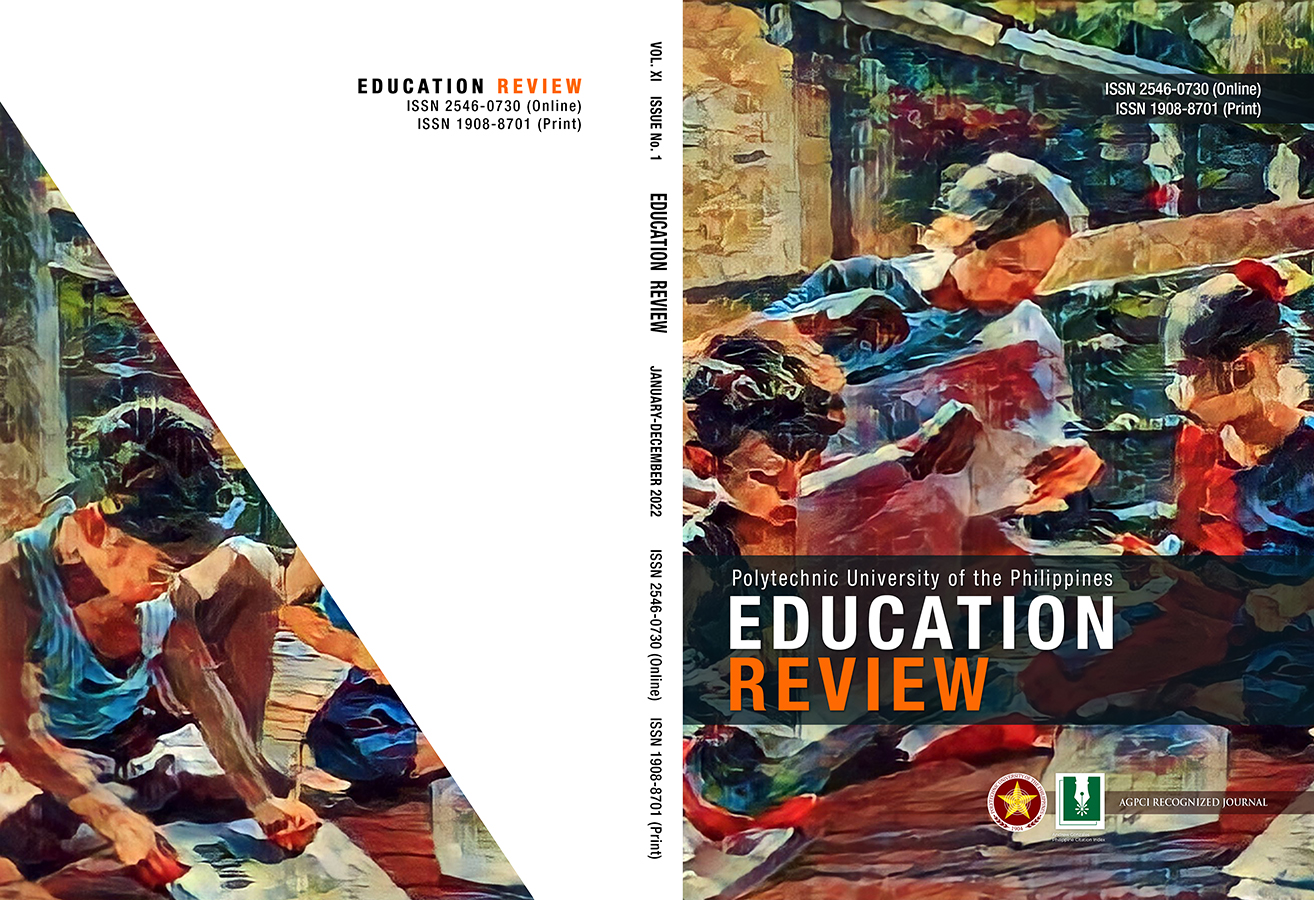Tracer Study sa mga Nagsipagtapos ng Master ng Artessa Filipino sa Politeknikong Unibersidad ng Pilipinas (2017-2020)
DOI:
https://doi.org/10.70922/kyhvm116Keywords:
Curriculum, Master of Arts in Filipino, Polytechnic University of the Philippines, Professional Development, Tracer StudyAbstract
This research primarily identified the current employment profile of the graduates of Master of Arts in Filipino of Polytechnic University of the Philippines (2017-2020). Specifically, it sought to determine the progress on their professional status and the relevance of institutional and academic factors to it. This descriptive study utilized purposive sampling and involved an iterative process of frequency distribution, percentage, rank, and average weighted mean. This study found out that the majority of the respondents: are currently employed before and after they took up MAF; are permanent/regular teachers in public secondary schools; have received job promotions and salary increase after graduating; and have acquired several professional skills and values relevant to their profession. The study generally concludes that the program has succeeded in providing quality education to its respondents as analyzed from their positive feedbacks. The researchers, however, recommend improving areas relative to influencing graduates to conduct and publish studies in refereed journals, be active members of discipline-related organizations, and attend several conferences, workshops, seminars, etc.
Downloads
Downloads
Published
Issue
Section
License
Copyright (c) 2025 Education Review

This work is licensed under a Creative Commons Attribution-NonCommercial 4.0 International License.
Licensing Term
Articles published in the EDUCATION REVIEW will be Open-Access articles distributed under the terms and conditions of the Creative Commons Attribution-NonCommercial 4.0 International License. This allows for immediate free access to the work and permits any user to read, download, copy, distribute, print, search, or link to the full texts of articles, crawl them for indexing, pass them as data to software, or use them for any other lawful purpose.
This open-access article is distributed under the terms and conditions of the Creative Commons Attribution-NonCommercial 4.0 International License


